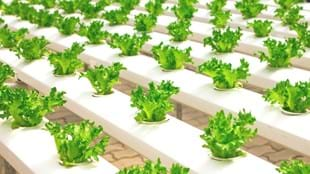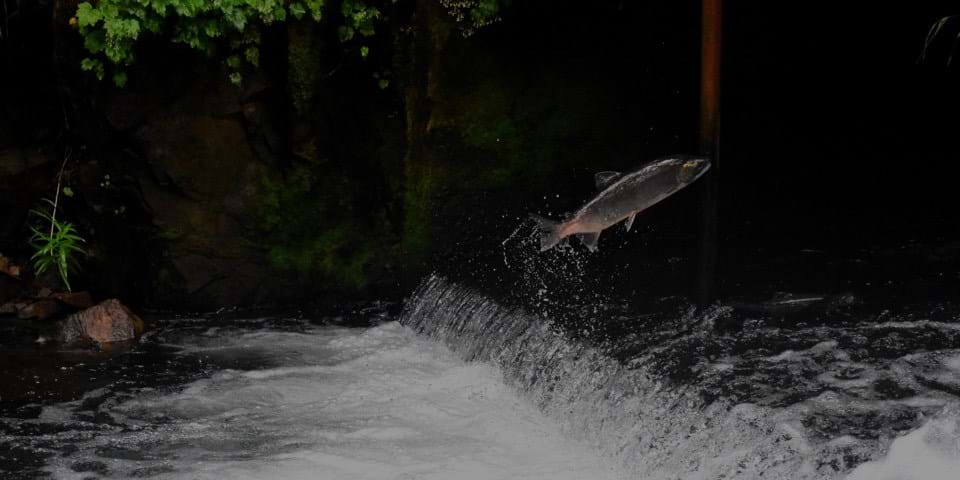When most of us think of organic produce, we think of the plant itself – a bunch of lettuce or bag of apples. Healthy, spray-free, and grown without pesticides.
But a central tenet of organics that most shoppers overlook is the movement’s focus on developing healthy soil as well as a healthy plant. That’s at the heart of a lawsuit now underway in the United States.
The United States Department of Agriculture (USDA) is allowing large hydroponic and aquaponic operations to classify their crops as ‘organic’, a move that has angered soil-based organic farmers. Hydroponics is the cultivation of plants in flowing water, without soil. The plants grow via nutrients passing through the water and are supported by mediums such as sand or fiber. The related process of aquaponics is also soil-less, but is a closed-loop circulatory system that includes raising fish, which provide the plants with nutrients.
The issue has been a controversial topic for years, because at its heart is the reason why the organics industry exists: an ideological difference between people who see a plant or its produce as something separate from the soil and the environmental health that produced it, and those who see the plant as just one part of a holistic system, encompassing human health, soil, air, water, insects, and more.
The argument came to a head in November 2017, when the National Organic Standards Board voted against a proposal to ban hydroponic methods in organic farming. As long as hydroponic farmers use only organic pesticides their produce can receive organic certification. Unlike the US, most countries don’t extend organic certification to crops that aren’t grown in soil.
The lawsuit, which was filed in March by the Center for Food Safety and a coalition of stakeholders, aims to stop this. It argues that because hydroponics doesn’t build healthy soils, the produce can’t be called organic, and thus it violates the federal Organic Foods Production Act, which requires farms to build soil fertility.
The executive director of the Center for Food Safety, Andrew Kimbrell, says healthy soil is the foundation of organic farming, and the USDA’s “loophole for corporate hydroponics” “guts the very essence of ‘organic’.”
“Organic farmers and consumers believe that the organic label means not just growing food in soil, but improving the fertility of that soil,” he says.
That hydroponically-grown crops can be called organic would be a huge financial blow to soil-based organic farmers, because hydroponics can grow a lot of vegetables more cheaply. Organic farmers have to undergo regular rigorous testing to ensure their soils are healthy and invest a great deal of time, knowledge and money in doing so.
Hydroponically- and aquaponically-grown plants have some major advantages over soil-based crops and are frequently cited as a future-food technology.
The plaintiff coalition includes some of the oldest organic farms in the United States: Swanton Berry Farm, Full Belly Farm, Durst Organic Growers, Terra Firma Farm, Jacobs Farm del Cabo, and Long Wind Farm, in addition to organic stakeholder organizations including organic certifier OneCert and the Maine Organic Farmers and Gardeners Association.
Jim Cochran, owner of Swanton Berry Farm, one of the oldest certified organic strawberry farms in California, said he’d be “perfectly happy” to have his strawberries compete with hydroponically-grown strawberries, if they were properly distinguished.
The issue, he says, is that hydroponics is “piggybacking on an Organic label that has taken more than 30 years to develop and establish in the minds of consumers”.
“Certifying hydroponically-grown crops as organic devalues that label.”
Nutritionally-speaking, there is yet to be scientific consensus on which is the best form of growing, even between organic and conventional produce, let alone hydroponic and organic. A 2011 study in the Annals of Internal Medicine found that published literature “lacks strong evidence” that organic foods are significantly more nutritious than conventional foods, though added that consumption of organic foods may reduce exposure to pesticide residues and antibiotic-resistant bacteria.
Taste and texture are subjective, but in terms of consumer preference, there may be little difference between the three farming methods as well. A 2011 pilot study in Food and Nutrition Journal compared lettuces grown hydroponically, conventionally, and organically on a range of measures, including taste, smell, visual quality and texture. The results found that the 23 panel members who compared the lettuces equally liked them all.
However, when it comes to the economics and impacts of food production, hydroponically- and aquaponically-grown plants have some major advantages over soil-based crops and for this reason, they’re frequently cited as a future-food technology.
Hydroponic and aquaponic systems use less arable land, fewer resources, and the plants are easier to harvest. They can be a hyper-local producer of fresh food, without the need for much space. If grown inside, the problem of pests and weeds virtually disappears. Aquaponics has the additional benefit of raising fish, which produce nutrients in their waste; beneficial microbes then convert that into usable nutrient sources for the plants. In turn, the plants filter the water.
Hydroponics is used in places where enough soil is difficult or impossible to find, such as in urban gardens, at manned bases in Antarctica, on spacecraft, or in the desert. And indeed, their image has recently benefited from a bit of space-adjacent marketing, capitalizing on plants’ ability to be grown vertically, upside down, and in your own home.
Recent crowdfunding projects OGarden Smart (Kickstarter) and Rotofarm (IndieGoGo) made good use of these, with Rotofarm describing itself as utilizing “NASA-inspired zero gravity technology”. (Though when it comes to yield, these units are hugely expensive compared to some dirt and seeds, and ongoing costs are likely to be as well).
There is a chance to create a new category or labeling system so the different benefits of hydroponics and organics can coexist together comfortably. Nevertheless, hydroponics removes a long history of human connection to land and its health, and the ruling threatens the more resource-intensive method of soil-based organic farming, not to mention livelihoods.
Soil health is the foundation of life on the planet, and well-managed soil is a valuable carbon sink. It would be sad to see the human networks that have built up around organic farming, and its hard-won environmental standards, damaged forever.
Naomi Arnold is a New Zealand-based author and writer specializing in environmental and health issues.








